
 |
|
January 2017 News from No BoundariesFall Conference Highlights Maintenance Management Systems and Drones | Maryland Joins No Boundaries Around the Maintenance World Meetings and Events | Training Opportunities | Research |
The No Boundaries Roadway Maintenance Practices pooled fund project, #TPF-5(330), facilitates the implementation of proven, ready-to-deploy maintenance innovations. |
| Welcome! This newsletter from the national No Boundaries consortium features the latest updates on the group's activities and compiles recent research, state practices, and training opportunities related to non-winter roadway maintenance from around the country. |
News from No Boundaries |
| Fall Conference Highlights Maintenance Management Systems and Drones
Videos of selected presentations and demonstrations are available on the No Boundaries website.
To learn more about how your agency can join No Boundaries and participate in upcoming events, contact Brian Hirt, CTC & Associates, at 402-770-9067 for more information. |
|
|
|
|
| Maryland Joins No Boundaries The No Boundaries pooled fund recently welcomed the Maryland DOT State Highway Administration as a new member. Sandi Sauter will serve as MDOT's representative to No Boundaries. She joins the following other member agency representatives: 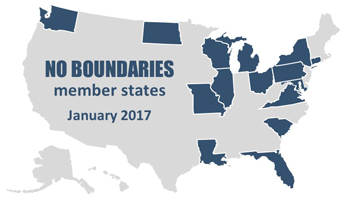
No Boundaries is Transportation Pooled Fund project #TPF-5(330). State DOT commitments to the project can be made using 100% federal funds. Contact Brian Hirt, CTC & Associates, at 402-770-9067 for more information. |
|
|
 |
Meetings and Events |
| Date | Meeting / Event | Location |
| January 29 - February 1, 2017 | National Asphalt Pavement Association Annual Meeting, "Strategies in a Changing Market: Knowledge, Growth, Success" | Orlando, Florida |
| February 1-4, 2017 | National Pavement Expo | Nashville, Tennessee |
| February 7-9, 2017 | 18th Annual Association of Modified Asphalt Producers Conference and Workshop | St. Petersburg, Florida |
| February 14-17, 2017 | Asphalt Emulsion Manufacturers Association/Asphalt Recycling & Reclaiming Association/International Slurry Surfacing Association Annual Meeting | Tucson, Arizona |
| March 20-23, 2017 | 10th International Conference on Managing Fatigue in Transportation | San Diego, California |
| April 3-6, 2017 | Austroads Bridge Conference, "Bridges: Connecting Communities" | Melbourne, Australia |
| April 25-27, 2017 | 11th Transportation Research Board International Bridge and Structure Management Conference | Mesa, Arizona |
| July 14-17, 2018 | 12th Transportation Research Board National Conference on Transportation Asset Management | San Diego, California |
To recommend a maintenance-related conference or meeting for this calendar (including state and local events), please email greg.landgraf@ctcandassociates.com with details and a link to the event website. |
||
Training Opportunities |
| 2017 Slurry Systems Workshop The International Slurry Surfacing Association will hold its 2017 Slurry Systems Workshop January 23-26 in Las Vegas. The workshop is a study course on slurry seal, micro surfacing, chip seals and crack treatments, and individual breakout sessions will focus on each of these disciplines. The workshop will include both discussion sessions and hands-on demonstrations, as well as additional equipment viewings. |
 |
|
|
|
 Transportation Asset Management Communications FHWA and AASHTO will hold a webinar on Transportation Asset Management Communications, the 25th webinar in the FHWA/AASHTO Transportation Asset Management webinar series, at 2:00 pm Eastern Time on February 8. Presenters will share noteworthy communication techniques and examples, including methods of engaging with their executive leadership and their elected officials. |
|
|
| Framework for a Pavement Management Database System TRB recorded a video in November presenting NCHRP Project 14-31, research that developed a Pavement Maintenance Database of maintenance techniques and materials and their effectiveness. The presentation addresses collection, storage and retrieval of pavement maintenance data, and how the database can promote compatibility of data reported by different agencies by providing consistent definitions of terms and data elements. The video is available free on-demand. |
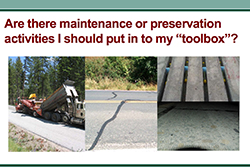 |
|
|
|
Asset Management Research |
| Civil Integrated Management (CIM) for Departments of Transportation, Volume 1: Guidebook, and Volume 2: Research Report Civil integrated management (CIM) encompasses a variety of practices and tools for collecting, organizing and managing information digitally about highway and other transportation projects. CIM has the potential to help agencies estimate and control costs and improve quality over the life of a transportation project—from planning through maintenance. Volume 1 of this report is a guidebook that reviews CIM tools and functions and provides a framework to aid their implementation. Volume 2 describes the research that led to the development of the guidebook, including a literature review, survey and a series of case studies. Volume 1. Volume 2. |
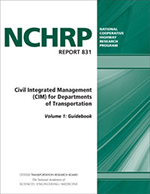 |
|
|
|
| Pavement Structural Evaluation at the Network Level: Final Report Transportation agencies traditionally use falling weight deflectometers to measure the structural condition of bound pavement layers above the unbound base layer. This is a relatively slow practice that requires lane closures. Moving deflection testing devices may provide an alternative that can collect data at traffic speeds, which can improve network-level pavement management. This project found that the traffic speed deflectometer and the rolling wheel deflectometer are potentially viable devices for mobile measurements. The project also developed analysis methodologies and processes for incorporating pavement structural information into pavement management systems. Report. |
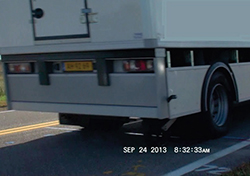 |
|
|
|
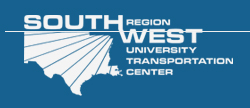 Integration of Heuristics and Statistics to Improve the Quality of Network-Level Pavement Condition Data Assessing and improving the quality of data in pavement management systems is a major challenge for both researchers and practitioners. This study developed and validated a computational method to identify potential errors in pavement condition data that integrates conventional statistical methods and heuristics, and provided a quantitative assessment of how data accuracy affects the estimated remaining service life of a roadway network. Report. |
|
|
| Effective Implementation of GPR for Condition Assessment and Monitoring—Phase 2 In the last year, the Maryland State Highway Administration initiated a task to survey 80 bridge decks using 3D ground penetrating radar (GPR). This project reviewed the GPR data analysis for 40 of these decks, developed an analysis pipeline for producing structural reports and identified potential improvements in data processing methods. Researchers concluded that GPR can successfully be used to monitor changes in bridge deck condition immediately after construction for quality assurance and acceptance testing, and to provide a baseline for long-term monitoring. Report. |
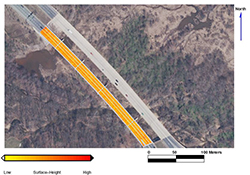 |
|
|
|
| Evaluation of Bridge Decks Using Non-Destructive Evaluation (NDE) at Highway Speeds for Effective Asset Management—Pilot Project This pilot project investigated the possibility of detecting, quantifying and visualizing bridge deck distresses using remote sensing techniques. Specifically, researchers used optical and thermal imagery collected at near-highway speeds on six large deck bridges without closing lanes to traffic. The project demonstrated that the approach will allow MDOT to perform a change detection analysis on distresses and provide objective data that can be used in generating condition assessments and National Bridge Inventory condition ratings. Report. |
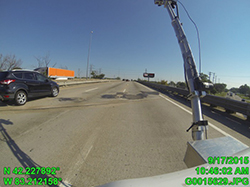 |
|
|
|
| Application and Validation of Remaining Service Interval Framework for Pavements The Remaining Service Interval (RSI) concept is a maintenance approach that considers the complete maintenance and rehabilitation activity of a pavement system, rather than the end-of-life assigned under a pavement Remaining Service Life (RSL) terminology. The RSI terminology was developed to eliminate confusion caused by conflicting definitions of various pavement RSL terminology. This project evaluated the effectiveness and potential benefits of the RSI approach. It found that RSI does present a valid approach for determining and communicating maintenance and rehabilitation needs, and can improve decision-making as agencies move away from a worst-first or threshold-driven approach toward a lowest lifecycle cost approach. Report. |
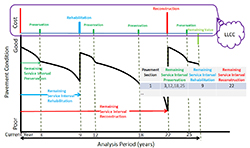 |
|
|
|
| Implementation of an Enhanced COPACES for Georgia's Counties and Cities Georgia DOT utilizes the PACES pavement condition evaluation system to help manage its pavement inventory. A previous research project developed the Computerized Condition Pavement Evaluation System for Counties and Cities (COPACES-CC) to help local governments use the PACES system. This project enhanced COPACES-CC based on pilot user comments and help other local agencies in Georgia implement it. Report. |
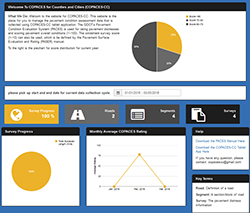 |
|
|
|
| Culvert Asset Management System: Best Practices/Pilot Project Researchers surveyed state DOTs and conducted a literature review to identify best practices for culvert asset management systems. Due to the large number of small culverts and constrained state DOT resources, a tiered or risk-based process for determining the frequency of culvert inspections may be a best practice, with more frequent inspections for culverts in poor condition or with other risk factors. Staffing an inspection program can be managed through district maintenance or bridge employees, central office staff, or seasonal or student intern personnel. A national culvert inspection manual is under development, but a national inspection training program that focuses on inspection technologies and the unique aspects of small culverts would be valuable. Report. |
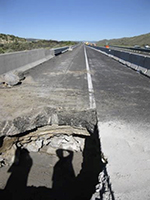 |
|
|
|
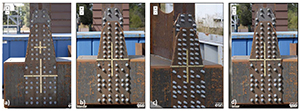 Image Processing, Analysis, and Management Tools for Gusset Plate Connections in Steel Truss Bridges In this pooled fund study, researchers developed a software package that allows users to process digital images of bridge gusset plates. The software, GussetImageProcessing.jar, allows users to remove perspective, establish scale, identify gusset plate boundaries, identify and group fasteners to truss members and collect geometric information for AASHTO-LRFR connection ratings. The tool can be used for managing bridge inspection images and other inventory data related to them. Report. |
|
|
 Analysis of Repeated Network-Level Testing by the Falling Weight Deflectometer on I-81 in the Virginia Department of Transportation's Bristol District This study compared the results of Falling Weight Deflectometer testing conducted in VDOT's Bristol District in 2006 to tests done in 2011 in an attempt to determine how often testing should be conducted. The results of these tests are used in rehabilitation decision-making. In this review, errors in measurement outweighed the changes in deflection values between the two datasets. As a result, it was not possible to recommend a time period between rounds of testing, so VDOT will continue testing based on local needs and what budgets allow. Report. |
|
|
Bridge Repair and Rehabilitation Research |
| High Speed Ground Penetrating Radar for Road Pavement and Bridge Structural Inspection and Maintenance This project investigated the strengths and limitations of the use of ground-penetrating radar (GPR) for inspecting roadways and bridge decks while traveling at normal driving speeds. Researchers designed an electronic circuit and mechanical structure to allow GPR to be implemented in the field, developed a signal processing algorithm and database to store data, and tested the system in the field. VTrans ultimately hopes to develop a systematic methodology for using GPR in its inspection program. Report. |
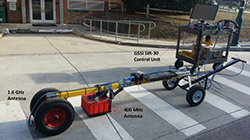 |
|
|
|
| Improving Pedestrian and Bicycle Connectivity During Rehabilitation of Existing Bridges Bridges that lack pedestrian and bicycle accommodations can force walkers and bicyclists to take different routes, eliminate biking and walking as potential transportation options, or reduce travel safety for pedestrians and bicyclists. A 2013 FHWA study cited bridge rehabilitation projects as opportunities to create bicycle and pedestrian facilities where there were none before. This white paper shares case studies from Montana, California and Oregon where improving nonmotorized facilities during bridge rehabilitation projects improved safety, reduced costs, improved mobility, or increased sustainability. Report. |
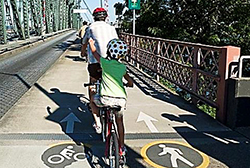 |
|
|
|
Emergency Maintenance Operations Research |
| Assessing, Coding, and Marking of Highway Structures in Emergency Situations, Volumes 1-3 Assessing, coding and marking highway structures in emergency situations is necessary for ensuring safety during those situations. There are currently no uniform processes for conducting these assessments, however. This NCHRP project presents a process for assessing highway structures in emergency situations. Volume 1 provides an overview of the research project. Volume 2 is a manual to the assessment process. Volume 3 offers coding and marking guidelines. In addition, NCHRP Web-Only Document 223 provides guidelines to the development of apps for assessing, coding and marking structures in emergency situations. |
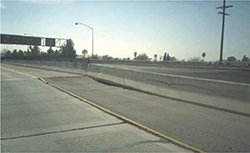 |
|
|
|
Funding and Budgeting Research |
| Leading Management Practices in Determining Funding Levels for Maintenance and Preservation This domestic scanning tour investigated the state of the practice, as well as promising developments, in ensuring reliable and adequate funding levels to support transportation maintenance programs, as well as the use of performance data to set performance targets, allocate funding, and establish maintenance priorities. Representatives of 12 states presented information during this scan. Factors in successful funding include an agency culture that embraces performance-based management, strong relationships with elected officials, achievable performance targets, reliable data collection efforts, and creative use of business processes and software tools. Report. |
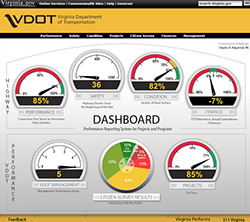 |
|
|
|
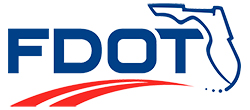 Analysis, Comparison, and Contrast of Two Primary Maintenance Contracting Techniques used by the Florida Department of Transportation Florida DOT has been using Asset Maintenance Contracts (AMCs), a form of performance-based maintenance contracting, since 2000. AMCs have gained popularity in recent years, with proponents arguing that they save money over traditional contracts by shifting administrative duties away from the Department. This research evaluated data from FDOT's AMC program to determine if it does, in fact, yield cost savings, as well as whether the quality of work is affected. Based on FDOT data from 2009 to 2015, AMCs did perform work more efficiently than more traditional contracts, and produced a small but statistically significant improvement in the quality of work. Report. |
|
|
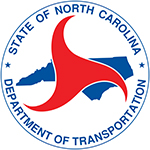 Development of a Maintenance Cost Index Maintenance accounts for a significant portion of the life cycle costs of a roadway. This project developed a set of maintenance cost indices that can be updated annually and used to quantify trends of in-house maintenance costs. Researchers developed indices for the Roadside, Maintenance, Traffic, and Bridge categories of NCDOT's Standing Maintenance budget, as well as a composite index, based on data from work orders. Overall roadway maintenance costs increased at a 9.4 percent annual rate from 2013 to 2015. Report. |
|
|
Gravel Road Maintenance Research |
| Unsealed Road Maintenance and Deterioration Performance Austroads conducted a two-year study to quantify the immediate and longer-term maintenance impact of grader blending and surface re-sheeting on unsealed roads. The study collected and analyzed roughness data from Queensland, New South Wales and Victoria to expand Australia's current models to cover a wider range of traffic and climate conditions and to validate its existing unsealed road roughness deterioration model. Report. |
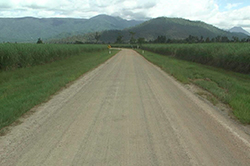 |
|
|
|
Pavement Repair and Rehabilitation Research |
| Guide to the Prevention and Restoration of Early Joint Deterioration in Concrete Pavements In recent years, states with severe winters have observed increased rates of premature joint deterioration in concrete pavements. This guide reviews the two primary mechanisms that have caused this deterioration, strategies for preventing or limiting the damage, and a summary of joint repair and restoration strategies. Routine maintenance activities that can reduce joint deterioration risk include joint cleaning and sealing, surface sealers, surface drainage, subsurface drainage, and maintenance of subdrain systems. Repair options described include surface sealers, partial-depth repairs, full-depth repairs and overlays, with recommendations for action based on pavement condition. Report. |
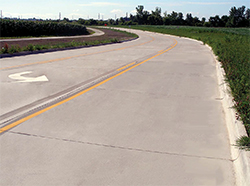 |
|
|
|
 Development of Enhanced Pavement Deterioration Curves This project developed a pavement condition predication model that takes into account pavement age and structural condition, as expressed in terms of the Modified Structural Index (MSI). The model predicts the average critical condition index based on a pavement section's age and MSI value. Researchers found that the MSI is a significant input parameter that affects the rate of deterioration, and that the model that includes MSI is likely to be more accurate than one that does not. Report. |
|
|
| Development of an Eco-Friendly, Cost-Effective Biogrout for Concrete Crack Repair Chemical sealants or surface treatment agents that are typically used to repair cracks in concrete can be expensive and harmful to the environment. This project developed a biocement using microbiologically induced calcium carbonate precipitation (MICP) technology and industrial and agricultural by-products, and evaluated its performance in mortar crack repair. The MICP technology successfully healed cracks in mortar samples, and significantly reduced the water permeability of cracked samples. Report. |
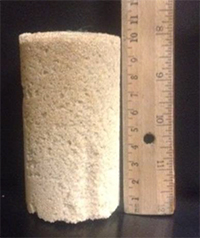 |
|
|
|
| Study of Georgia's Pavement Deterioration/Life and Potential Risks of Delayed Pavement Resurfacing and Rehabilitation Georgia DOT used 28 years of pavement condition data, collected as part of its PACES pavement condition evaluation system, to evaluate the likely impacts of delays in pavement resurfacing on its effectiveness, as well as impacts of delays on construction and user costs. GDOT typically resurfaces pavements when they reach a COPACES rating of 70. On high-volume roads, delaying treatment reduces the effectiveness of resurfacing by about 10 percent for every 5 COPACES rating intervals, so a resurfacing that added 10 years of pavement life at a rating of 70 added only 9 years at a rating of 65. Report. |
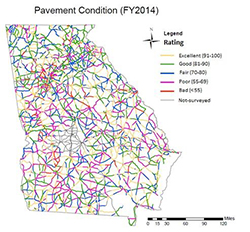 |
|
|
|
| Use of a Double Chip Seal to Correct a Flushing Hot Mix Asphalt Pavement in Washington State In 1999, WSDOT applied a hot-mix asphalt overlay to SR-20. This HMA began to flush excessively shortly after construction, despite the roadway being in good condition structurally. A single chip seal was deemed unlikely to resolve the issue, since it would likely flush as well due to the excess binder that would fill void space. WSDOT instead applied a double chip seal and evaluated its performance over five years. While this treatment initially looked good, flushing was visible within a year after placement and within four years low friction of the pavement needed to be addressed. Report. |
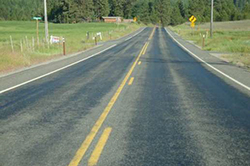 |
|
|
|
Right-of-Way Maintenance Research |
| Identification of Low Growing, Salt Tolerant Turfgrass Species Suitable for Use Along Highway Right of Way This project evaluated grass species for use along roadsides in Maryland. Particular considerations were cost, rate of establishment, benefits to the ecosystem and resilience to roadside conditions including drought, low fertility, freezing, salinity, acidity, wear and competition. The report rated 21 species and cultivars. The native grass species sporobolus, side-oats grama and purple lovegrass were rated as excellent potential alternatives to the tall fescue that is Maryland's current standard roadside grass but which received a grade below the median. Report. |
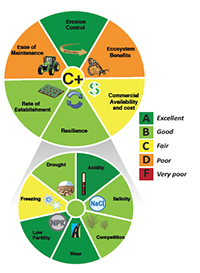 |
|
|
|
Subscribe to this newsletter |